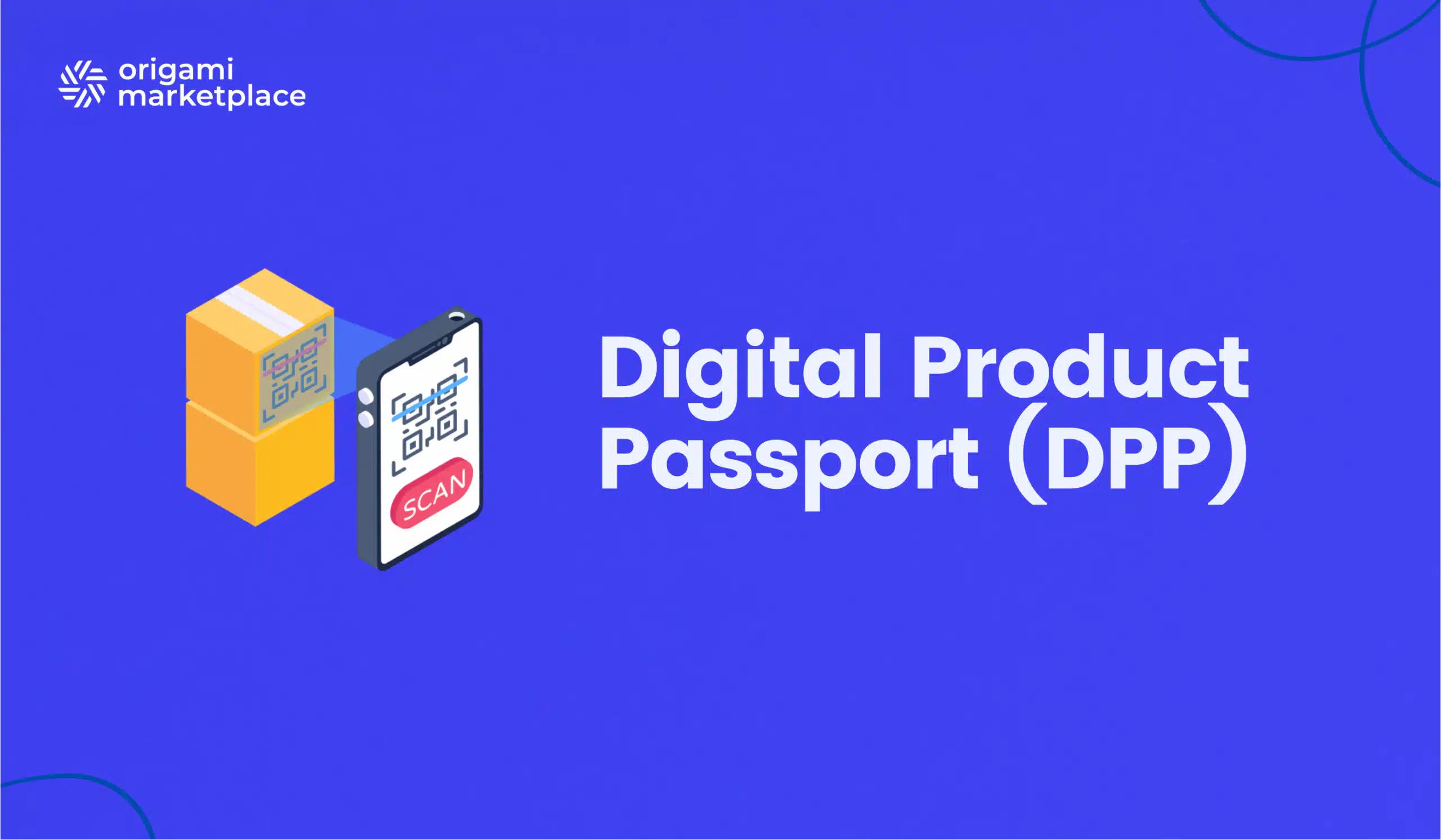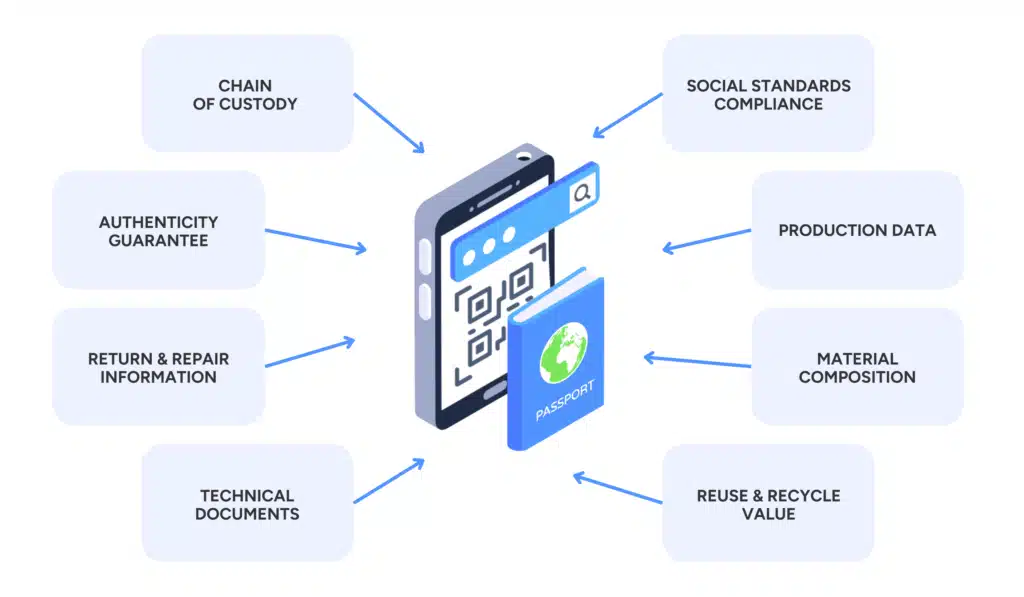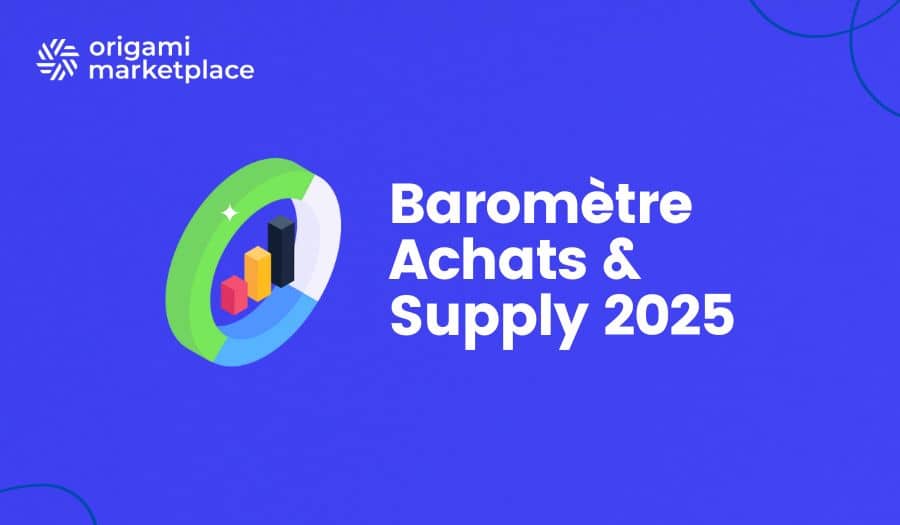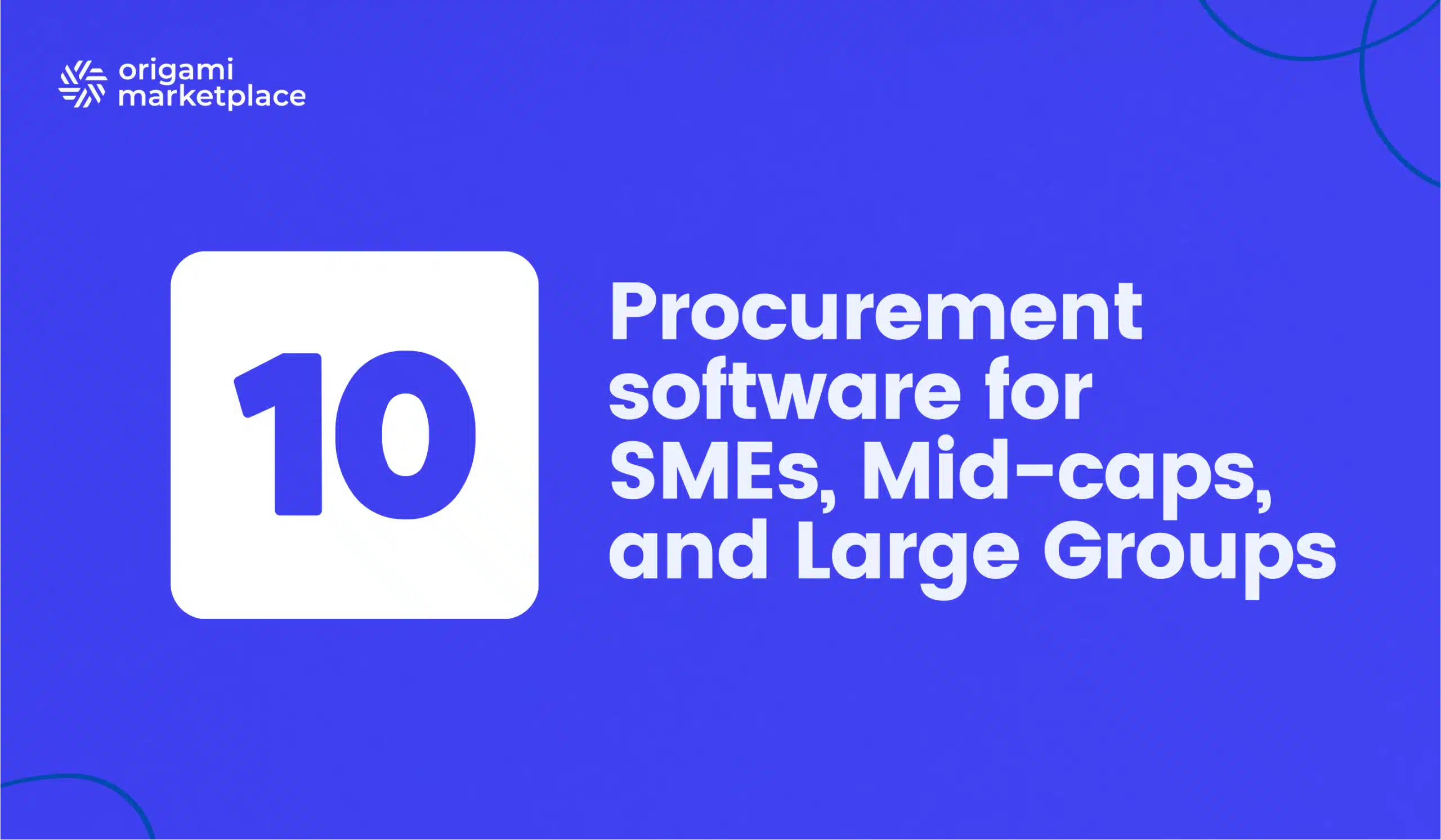Digital Product Passport (DPP) – Guide
- Arnaud
- 7 minutes reading

The Digital Product Passport (DPP) is poised to revolutionize how the European Union (EU) designs and markets consumer goods. It is a regulatory requirement that, starting in 2027 (introduced progressively), will encourage the transition toward more sustainable products and the circular economy.
Within the framework of its Green Deal, the EU’s objective is to drastically reduce the carbon footprint of products placed on the market, aiming to become the first climate-neutral continent by 2050.
👋 No time to read the whole article? Find the summary here.
1. What is the Digital Product Passport?
If you manufacture or distribute physical goods or even components for the European market, it is crucial to start looking into the Digital Product Passport (DPP) concept now.
Imagine that in the future, every item sold in the European Union will be required to have an online version that is continuously updated to trace its lifecycle, from raw material sourcing all the way through recycling. This vision is about to become reality.
The Digital Product Passport takes the form of a dynamic, digital product sheet, compiling all key information about an item, including:
- Origin and sourcing: where materials and components come from.
- Characteristics and composition: technical data and performance indicators.
- Maintenance and repairability: repair instructions, availability of spare parts, and disassembly options.
- End-of-life and recycling: methods of collection, recycling, and repurposing.
By providing full traceability from beginning to end, the DPP allows the various players in the value chain (producers, importers, distributors, consumers, repairers, recyclers, etc.) to more easily share and access these data, thereby encouraging new circular models (reuse, repair, refurbishment, and so on).
2. Which products are affected?
In fact, the complete tracking of a product is not a new concept—mandatory nutrition labels and regulatory data sheets already exist in Europe. The difference is that, with the DPP, the scope is expanding massively and traceability becomes more detailed and transparent than ever for new product categories.
The ESPR (Ecodesign for Sustainable Products Regulation) applies to all physical goods, including key components and intermediate products placed on the EU market. A preliminary analysis published by the Joint Research Center identifies batteries, textiles, electronics, and construction as priority sectors. Food items, animal feed, and medical products are not affected. Other product categories are likely to be added over time, depending on the European Commission’s decisions.
For electrical and electronic industries, batteries, textiles, construction, and beyond, this regulation represents a major shift that needs to be anticipated starting now.
Ready to turn your B2B, B2C, or C2C marketplace vision into reality?
To help you develop the best platform possible, we’ve gathered all the must-have features, key technical considerations, and best practices in a comprehensive document:
Download the Specifications template 🗒
Perfect for smaller or medium-scale projects without a formal purchasing process. It will help you outline your requirements effectively and streamline your selection process.
Download the Request for Proposal template 📒
Ideal for larger, more complex marketplace projects with a formal purchasing department or advanced procurement policies.
3. The objectives of the Digital Product Passport
The digital product passport (DPP), as envisioned by the ESPR proposal, aims to foster the circular economy, sustainability, and transparency throughout the European Union.
- Encourage circularity: Extend product lifespans, reduce environmental impact, and promote business models based on reuse and repair.
- Facilitate new services and approaches: Thanks to reliable data, maintenance, repairs, and the sale of spare parts can become more efficient and profitable.
- Empower consumers: By making a product’s ecological and social characteristics accessible, citizens can make more responsible choices.
- Enhanced traceability and transparency: Consumers will gain better insight into a product’s environmental impact (carbon footprint, manufacturing processes, etc.) and can adapt their purchasing decisions accordingly. Moreover, the fight against counterfeiting and after-sales service management will also be improved.
The Digital Product Passport is not merely a regulatory constraint—it is also a source of new opportunities. According to the European Commission, existing eco-design measures in place for more than 30 product families alone saved European consumers 120 billion euros in energy in 2021, highlighting the scale of the benefits.
4. Why are QR codes ideal?
The QR code, well-known and widely adopted since the COVID-19 pandemic, offers several advantages:
- Versatility: One QR code can link to the Digital Product Passport, as well as user manuals, demo videos, or installation tutorials.
- Easy updates: You can modify the information linked to the QR code in real time, without having to reprint the label.
- Interoperability and ISO standards compliance: The GS1 standard is recognized internationally and aligns with ISO/IEC 15459.
- Additional security layer: Different access levels can be configured to protect trade secrets while still offering the transparency required by regulations.

5. How to ensure compliance?
Although the complete legal framework is still being finalized, several key steps can already be anticipated:
- Identify your data flows: Map out all information related to your products (origin, composition, maintenance, recycling, etc.) and assess how to collect and centralize it.
- Adopt standardized unique identifiers: Choose a recognized system, such as GS1 (GTIN), to ensure traceability and international compatibility.
- Set up a database or digital portal: This will store and share the required information, with the option of real-time updates.
- Manage access rights: Sensitive data (intellectual property, manufacturing secrets) must be protected, while making essential environmental information readily accessible.
- Oversee the transition: Implement an internal action plan and stay up to date with publications from the European Commission (delegated acts, roadmaps) so you can adjust your strategy regularly.
6. Initiatives and stakeholder communities
At the European level, the CIRPASS (Circular Product Access Passport System) initiative, funded by the European Union, is developing a shared digital passport infrastructure for various sectors. As part of CIRPASS 2, GS1 is spearheading tangible projects to demonstrate the effectiveness of the DPP in the textile and tire industries.
Interested in collaborating with other stakeholders, pooling insights, and co-developing effective tools?
Join the GS1 France DPP community or other industry-specific groups to share experiences, receive tailored guidance, and stay ahead of evolving standards.
The Digital Product Passport (DPP) represents a decisive turning point in how products are designed, marketed, and managed on the European market. By organizing key information—such as origin, composition, or ecological footprint—into a digital record that is both open and updatable, it facilitates regulatory compliance, strengthens traceability, and accelerates the shift toward a more circular economy.
By preparing now—particularly through adopting GS1 standards, centralizing data management, and joining interest-based communities—you will gain an edge in meeting the ESPR requirements and stand out in a market increasingly attentive to sustainability issues. Collaborating, anticipating, and innovating around the DPP will enable your company to build a more responsible and prosperous future.
Digital Product Passport (DPP)
- Gradual obligation starting in 2027 within the EU to promote sustainability and the circular economy.
- Principle: Consolidate all key product information (origin, composition, maintenance, recycling) into a digital record that can be updated.
- QR codes: An ideal solution to connect products to their DPP in real time.
- Compliance steps:
- Map out product data.
- Adopt standardized unique identifiers (e.g., GS1).
- Set up a dedicated digital portal.
- Manage and protect sensitive data.
- Track publications and delegated acts from the European Commission.
- Communities and initiatives: CIRPASS, GS1, etc. foster the exchange of best practices and the development of a common framework.
Discover how the Origami Marketplace API and its network of partners can transform your business, whatever its size, thanks to its innovative solution based on the marketplace model.


